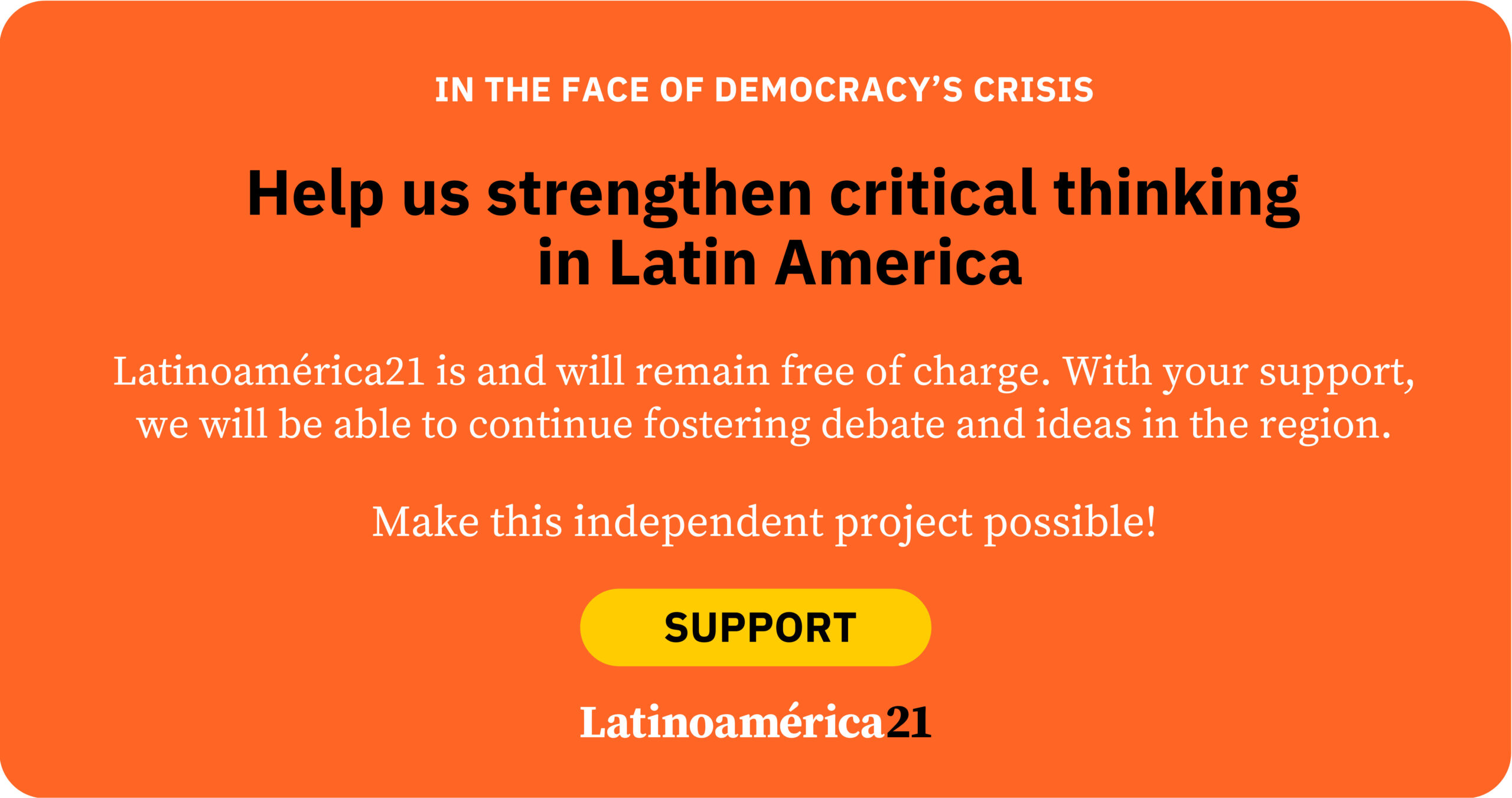En las esquinas de Ciudad de México, Bogotá o Lima, es común ver repartidores con mochila en forma de cubo a los hombros esperando la próxima notificación en sus celulares. Esta imagen resume la promesa del trabajo digital: independencia, movilidad y conexión digital. Para muchos, esta modalidad laboral representa una vía de escape frente al desempleo o la informalidad tradicional. Sin embargo, tras la narrativa de modernidad se esconde una realidad ambigua.
La economía gig se refiere a un mercado laboral caracterizado por empleos de corto plazo y con pagos por tarea, coordinados a través de plataformas digitales, que conectan a trabajadores con clientes. Estas tareas pueden incluir entregas, transporte, asistencia doméstica o servicios profesionales en línea. En América Latina y el Caribe, este tipo de empleo ha crecido con rapidez en los últimos años, impulsado por la expansión de internet, la falta de empleo formal y, sobre todo, por la crisis provocada por la pandemia de COVID-19. Así, en una región sin mecanismos universales de seguro de desempleo, el trabajo en plataformas digitales funcionó como un salvavidas.
Oportunidad para unos, barrera para otros
En América Latina y el Caribe la transformación tecnológica avanza con fuerza, pero no siempre de manera equitativa. Tal como advierte el Informe Regional sobre Desarrollo Humano 2025, Bajo presión: Recalibrando el futuro del desarrollo, elaborado por el Programa de las Naciones Unidas para el Desarrollo, el impacto de las nuevas tecnologías en el empleo abre oportunidades, al mismo tiempo que profundiza vulnerabilidades existentes.
No hay duda de que estas plataformas han abierto oportunidades donde antes había obstáculos. Jóvenes sin experiencia laboral, migrantes con dificultades para convalidar títulos, mujeres con responsabilidades de cuidado y habitantes de ciudades pequeñas encuentran en estas apps una forma de generar ingresos. Su atractivo radica en la flexibilidad y los bajos requisitos de entrada. Poder conectarse en los horarios disponibles, combinar actividades y evitar los filtros del empleo formal ofrece una adaptabilidad valiosa en contextos de alta vulnerabilidad.
Sin embargo, el potencial de generación de ingresos y las amenidades que ofrecen esconden profundas carencias estructurales. El trabajo gig se caracteriza por ingresos bajos y volátiles, falta de contrato laboral y ausencia de protección social. Se trata de un modelo donde la plataforma asume el rol de intermediaria en la relación laboral, conectando trabajadores independientes con clientes. Esto significa que los trabajadores no cuentan con un empleador y, por lo tanto, la protección que la legislación laboral promueve para los trabajadores asalariados no es aplicable a los trabajadores gig.
En Montevideo, por ejemplo, un conductor de Uber puede ganar menos que un taxista convencional si se contabilizan las horas efectivas de trabajo, el combustible, el mantenimiento del vehículo y el tiempo de espera. Además, el pago por tarea implica que parte del tiempo destinado a actividades como conectarse, esperar pedidos y preparar propuestas, no es remunerado. En plataformas como Workana –que conecta a freelancers con clientes que buscan servicios digitales o que se realizan de manera remota— los trabajadores destinan hasta un tercio de su jornada a actividades no pagadas, y aun así enfrentan dificultades para acceder a proyectos si no tienen una buena calificación o si compiten con freelancers de países donde los costos son más bajos.
A esto se suma el poder de monopsonio de las plataformas: pocas empresas determinando las reglas del juego y las condiciones de acceso al trabajo de millones de personas. La reputación digital se convierte en moneda de cambio, pero es frágil y opaca. Malas calificaciones, desconexiones arbitrarias o cambios en los algoritmos pueden dejar a un trabajador sin ingresos ni explicaciones, y sin ningún mecanismo efectivo de apelación.
Nuevas formas de exclusión
Aunque inclusiva en algunos aspectos, la economía gig también refuerza desigualdades ya existentes. El acceso a internet, a dispositivos digitales y a habilidades tecnológicas sigue siendo muy desigual en la región. Las personas que viven en zonas rurales o con infraestructura limitada encuentran barreras casi insalvables para integrarse.
La participación femenina, al mismo tiempo, cae drásticamente en plataformas que requieren presencia física, donde los riesgos de acoso y la falta de condiciones de seguridad desincentivan su participación. Además, los trabajadores con bajo nivel educativo o con limitado dominio del inglés quedan excluidos de las mejores oportunidades que ofrecen las plataformas globales.
La paradoja es evidente: quienes más necesitan estas oportunidades son también quienes enfrentan más obstáculos para acceder a ellas. Y al operar en un vacío regulatorio, estas plataformas amplifican el riesgo de que el trabajo gig se convierta en una nueva cara de la vieja informalidad.
De la excepción a la norma
El trabajo en plataformas digitales ya no es una novedad. Se ha consolidado como una forma de empleo urbano en la región. Pero su expansión sin regulación está erosionando los principios básicos de protección del trabajo digno. No se trata de frenar la innovación, sino de encauzarla. De reconocer que la tecnología puede ser un habilitador del desarrollo, pero solo si se acompaña de políticas públicas que garanticen condiciones mínimas de dignidad, protección y equidad.
Repensar el marco normativo del trabajo digital es urgente. Esto implica reconocer jurídicamente la relación laboral en los casos que corresponda, ampliar los mecanismos de protección social para trabajadores independientes, garantizar transparencia algorítmica y promover la organización colectiva en este nuevo ecosistema laboral. Sin estas acciones, el trabajo en plataformas seguirá siendo un espejismo; una promesa de inclusión que, en la práctica, reproduce la exclusión con una nueva interfaz.
En última instancia, la pregunta no es si las plataformas digitales deben quedarse, sino cómo queremos que se queden. Si como herramienta de prosperidad o como engranaje de una precariedad más sofisticada. Y esa respuesta, más que tecnológica, dependerá de las decisiones de política pública.
Este artículo se basa en los hallazgos del Informe Regional sobre Desarrollo Humano 2025, titulado “Bajo presión: Recalibrando el futuro del desarrollo”, elaborado por el Programa de las Naciones Unidas para el Desarrollo (PNUD) en América Latina y el Caribe.














